Physics Of flight
Dive deep
Let's embark on a captivating journey through the realm of flight physics.
begin with
Fundamental Principles
Flight involves a complex interplay of various principles of physics and aerodynamics.
- First Law (Law of Inertia): This law states that an object will remain at rest or in uniform motion unless acted upon by an external force. In the context of flight, it explains how an aircraft maintains its velocity and direction unless influenced by external forces such as lift, drag, thrust, or gravity. For example, once an airplane reaches cruising speed, it will continue flying straight and level unless other forces, like pilot input or wind, alter its course.
-
Second Law (Law of Acceleration): This law states that the acceleration of an object is directly proportional to the net force acting on it and inversely proportional to its mass. In flight, this law explains how aircraft accelerate, decelerate, or change direction in response to forces like thrust, drag, and gravity. For instance, when an airplane’s engines produce thrust greater than the forces of drag and gravity, it accelerates; when thrust equals drag, the aircraft maintains constant velocity (cruising); and when thrust is less than drag or when other forces act upon it, the aircraft decelerates or changes direction.
- Third Law (Action-Reaction): This law states that for every action, there is an equal and opposite reaction. In flight, this law is evident in the generation of lift and propulsion. For example, the downward force exerted by an aircraft’s engines (action) results in an equal and opposite force of upward thrust (reaction), propelling the aircraft forward. Similarly, as air flows over an aircraft wing, it generates lift (action), which is met by an equal and opposite downward force of air pressure (reaction) on the wing, supporting the aircraft in flight.
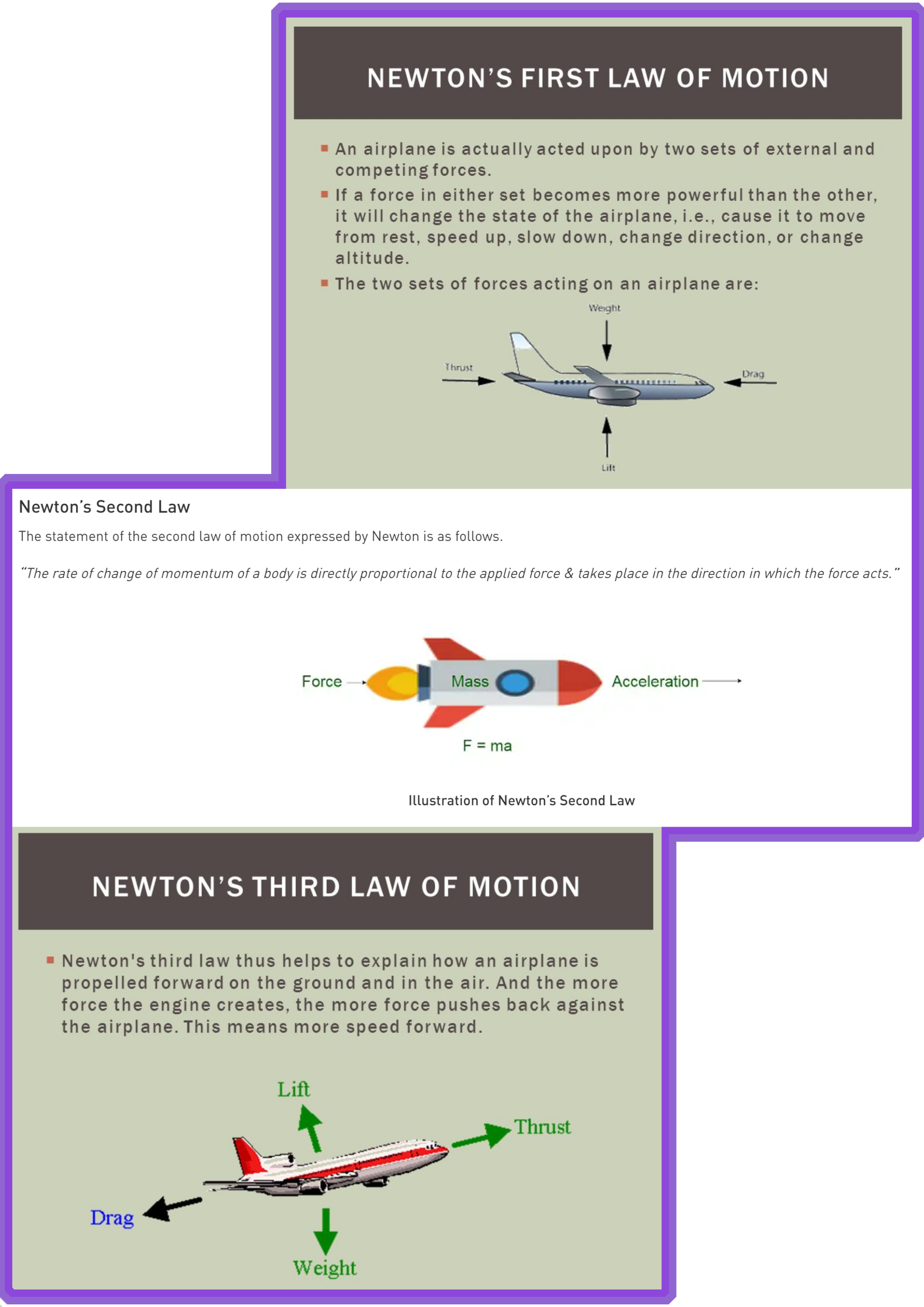
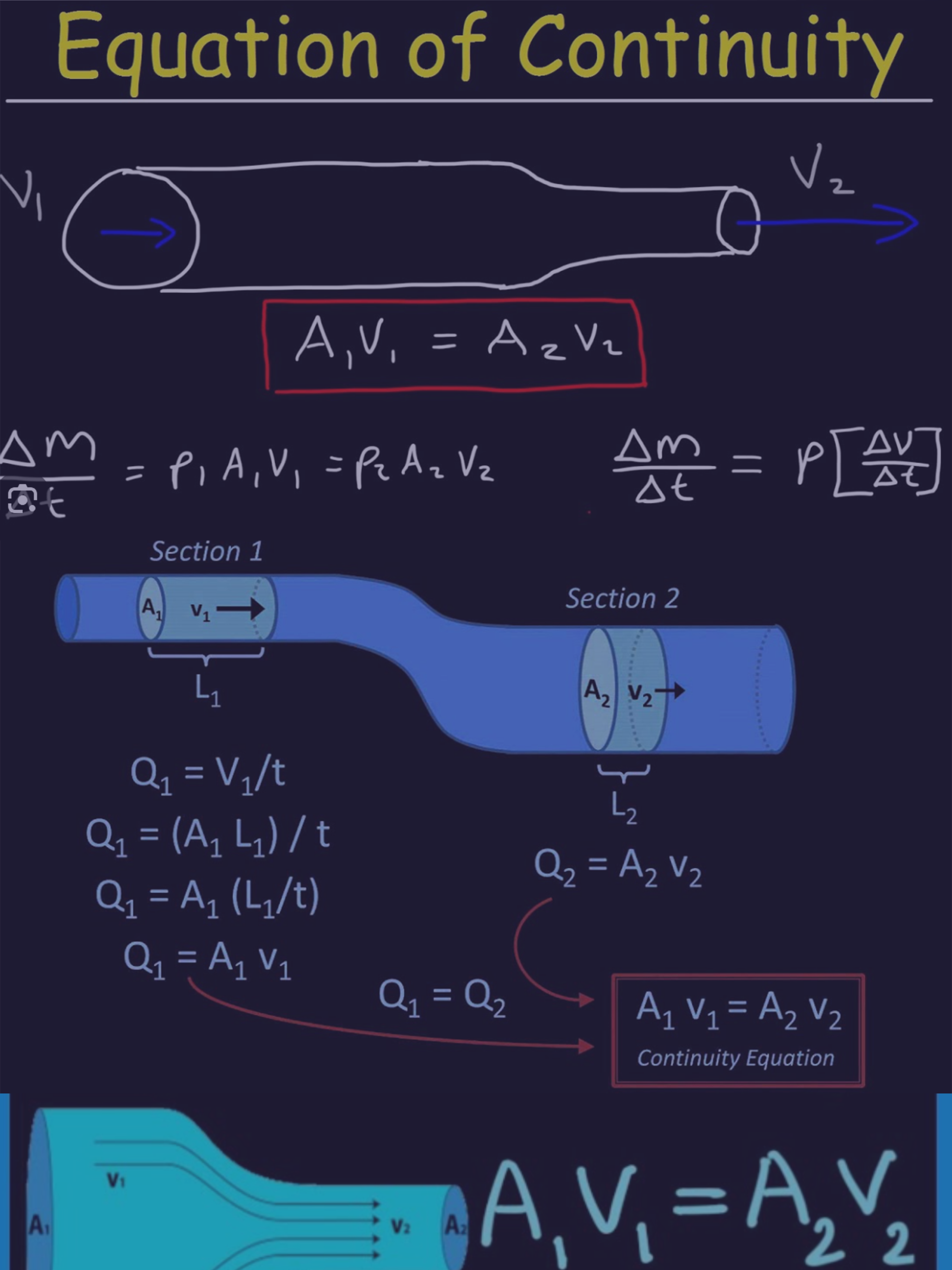
Equation of continuity
The equation of continuity is a fundamental principle in fluid dynamics that describes the conservation of mass within a fluid flow. It states that for an incompressible fluid (a fluid with constant density), the mass flow rate remains constant along a streamline, or in other words, the mass entering a given region must equal the mass leaving that region, assuming no sources or sinks of mass within the flow.
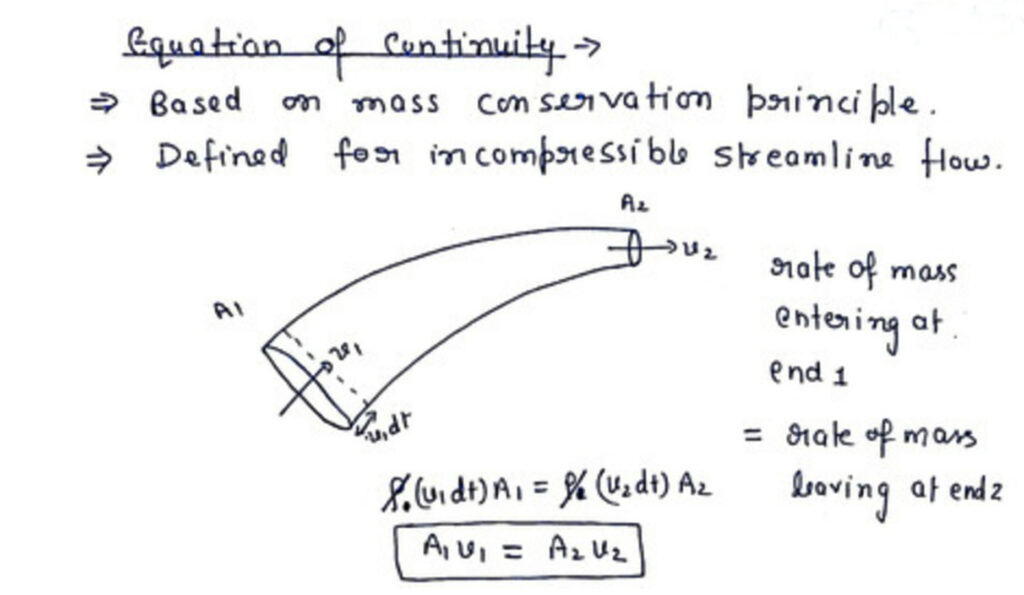
Bernoulli's
Principle
Bernoulli’s Principle states that The total mechanical energy of the moving fluid comprising the gravitational potential energy of elevation, the energy associated with the fluid pressure and the kinetic energy of the fluid motion, remains constant.
Bernoulli’s principle can be derived from the principle of conservation of energy
The formula for Bernoulli’s principle is given as follows:
Where p is the pressure exerted by the fluid, v is the velocity of the fluid, ρ is the density of the fluid and h is the height of the container.
Bernoulli’s Principle also states that within a fluid flow, an increase in the speed of the fluid occurs simultaneously with a decrease in pressure or a decrease in the fluid’s potential energy.
In the context of the airplane wing, when air flows over the curved top surface of the wing, it must travel a greater distance compared to the air flowing along the flat bottom surface. This difference in distances means that the air on top must travel faster to meet the air at the back of the wing at the same time as the air traveling below. According to Bernoulli’s Principle, faster-moving air exerts less pressure than slower-moving air. Thus, the air pressure above the wing is lower than the air pressure below the wing. This pressure difference creates an upward force known as lift, which helps the airplane to overcome gravity and ascend into the air.
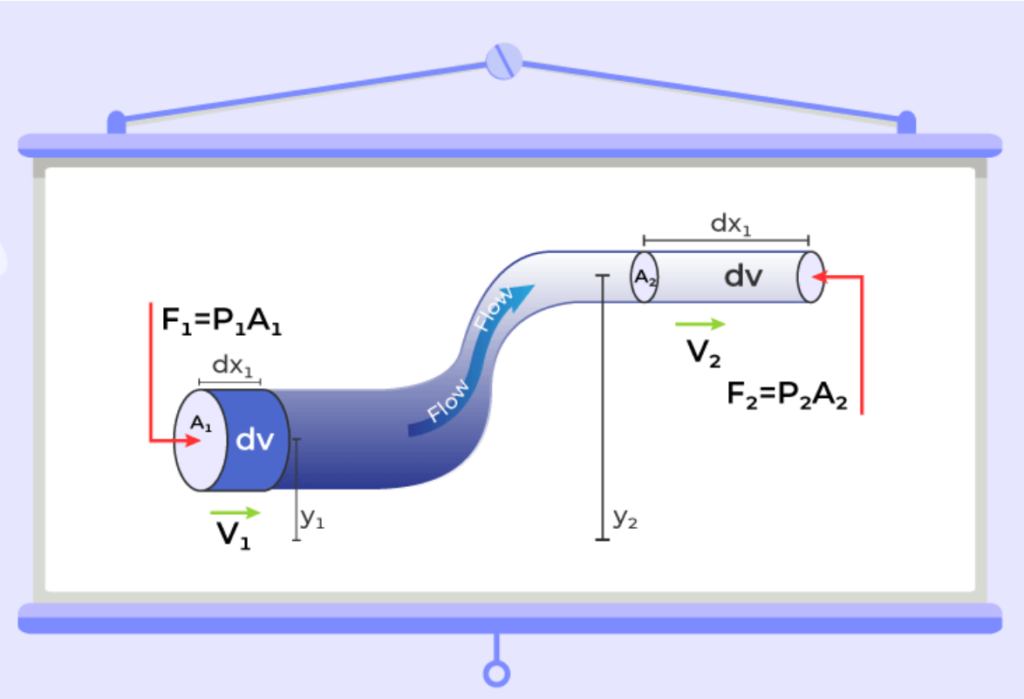

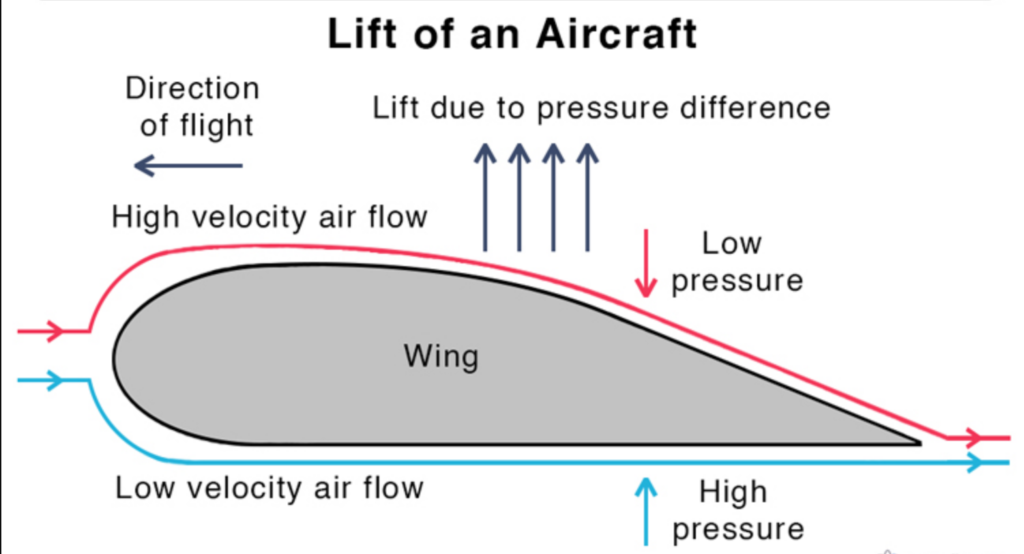
COANDA EFFECT
The Coandă effect refers to the tendency of a fluid jet, such as air or water, to adhere to a nearby surface and follow its contour rather than continuing in a straight path. This phenomenon occurs due to differences in pressure and velocity between the fluid jet and the surrounding air or fluid, causing the jet to be attracted to the surface by the lower pressure region created by the boundary layer.
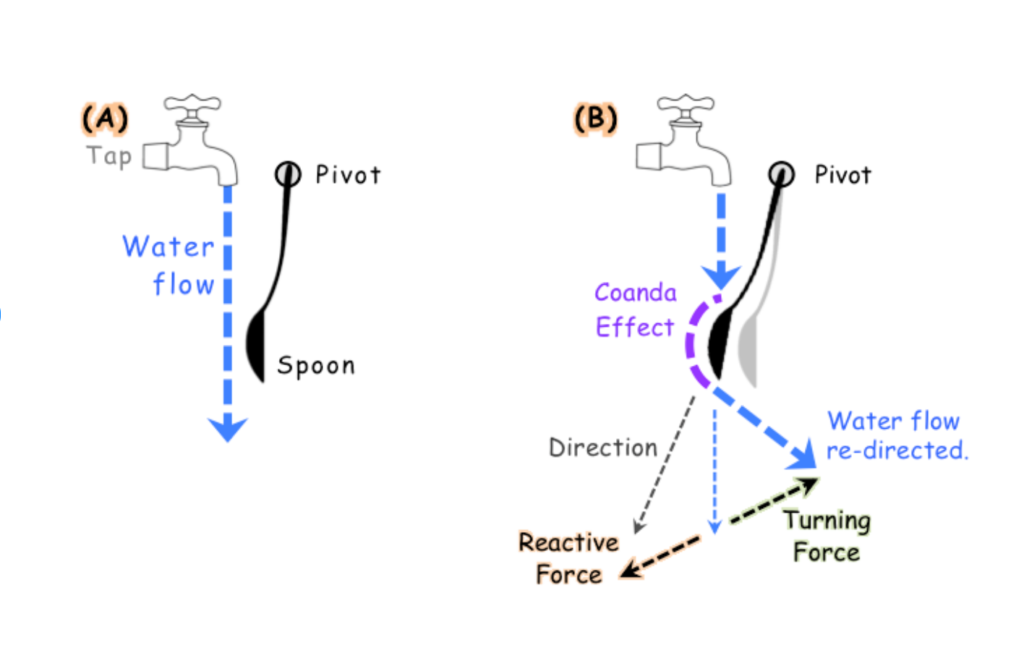

In the case of flight, the curvature of an aircraft wing causes airflow to adhere to its surface, resulting in lower pressure on the upper surface compared to the lower surface. This pressure difference generates lift, allowing the aircraft to remain airborne. Additionally, the Coandă effect affects the aircraft’s control surfaces, such as flaps and ailerons, by directing airflow to achieve desired changes in lift and maneuverability.


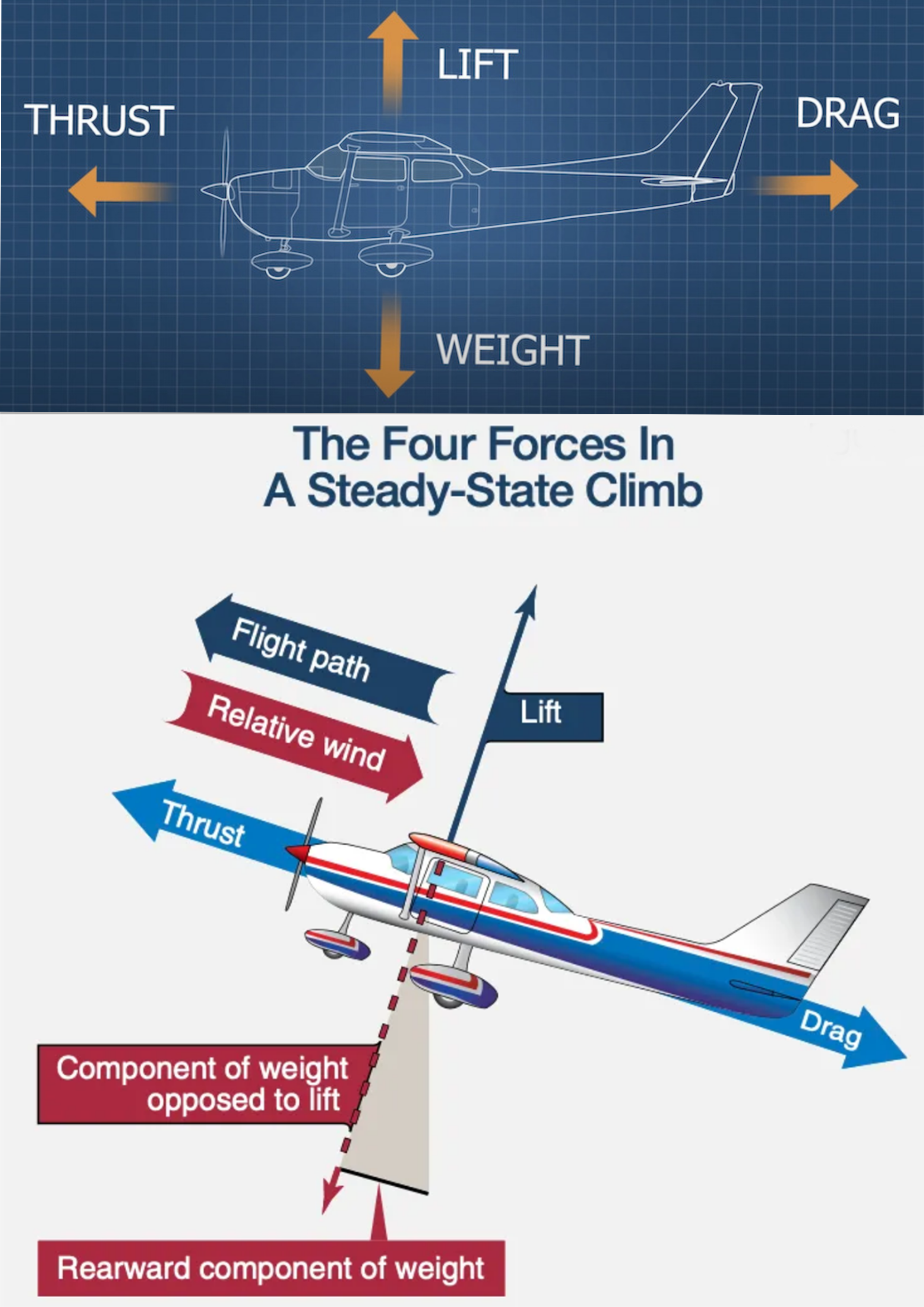
Forces of Flight
Flight is governed by four fundamental forces
Weight
Weight is the force of gravity. It acts in a downward direction—toward the center of the Earth.
Lift
Lift is the force that acts at a right angle to the direction of motion through the air. Lift is created by differences in air pressure.
Thrust
Thrust is the force that propels a flying machine in the direction of motion. Engines produce thrust.
Drag
Drag is the force that acts opposite to the direction of motion. Drag is caused by friction and differences in air pressure.
In the case of a multirotor,
In a stable hover, the weight is balanced by upward thrust, maintaining a constant altitude.
Mathematically, this equilibrium is expressed as T = W, where T is the upward thrust and W is the weight of the drone.
When the drone tilts, the thrust divides into two components: lift (perpendicular to the axis) and horizontal thrust (parallel to the axis).
Mathematically, lift (L) is determined by L = T * cos(θ), where θ is the tilt angle, while horizontal thrust (T_horizontal) propels the drone forward or backward.


TYPES OF DRAG
The basic types of drags are Parasite drag ,Induced drag,Wave drag etc.
Parasite drag
Parasite drag is composed of all the forces that work to slow an aircraft’s movement. As the term “parasite” implies, it is the drag that is not associated with the production of lift. There are three sub-types of Parasite Drag: Form Drag, Interference Drag, and Skin Friction Drag.
Form drag The portion of parasite drag generated by the aircraft due to its shape and airflow around it. Examples include the engine cowlings, antennas, and the aerodynamic shape of other components.
Interference drag comes from the intersection of airstreams that creates eddy currents, turbulence, or restricts smooth airflow. For example, the intersection of the wing and the fuselage at the wing root has significant interference drag.
Skin friction drag is the aerodynamic resistance due to the contact of moving air with the surface of an aircraft.
Induced drag
Induced drag is a consequence of producing lift. It is a direct result of wingtip vortices created by the difference in pressure between the top and bottom of the wing.
Wave drag :
Wave drag is a type of drag that occurs when an aircraft approaches the speed of sound or surpasses it. As the aircraft nears the speed of sound, shockwaves form around its surfaces, creating significant air resistance. This wave drag increases rapidly as the aircraft’s speed approaches the speed of sound, making it more challenging to maintain high speeds efficiently.
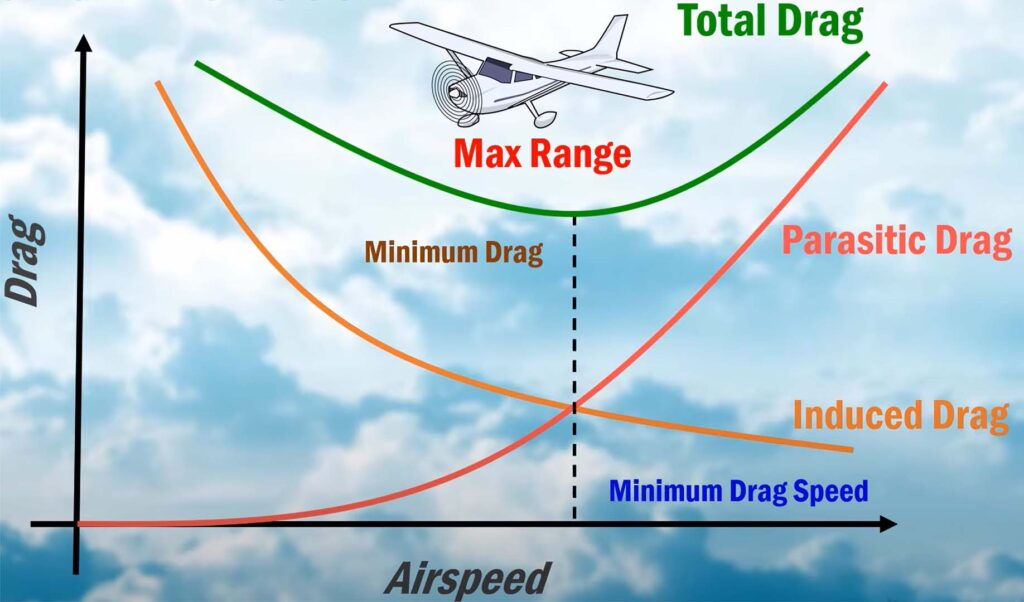
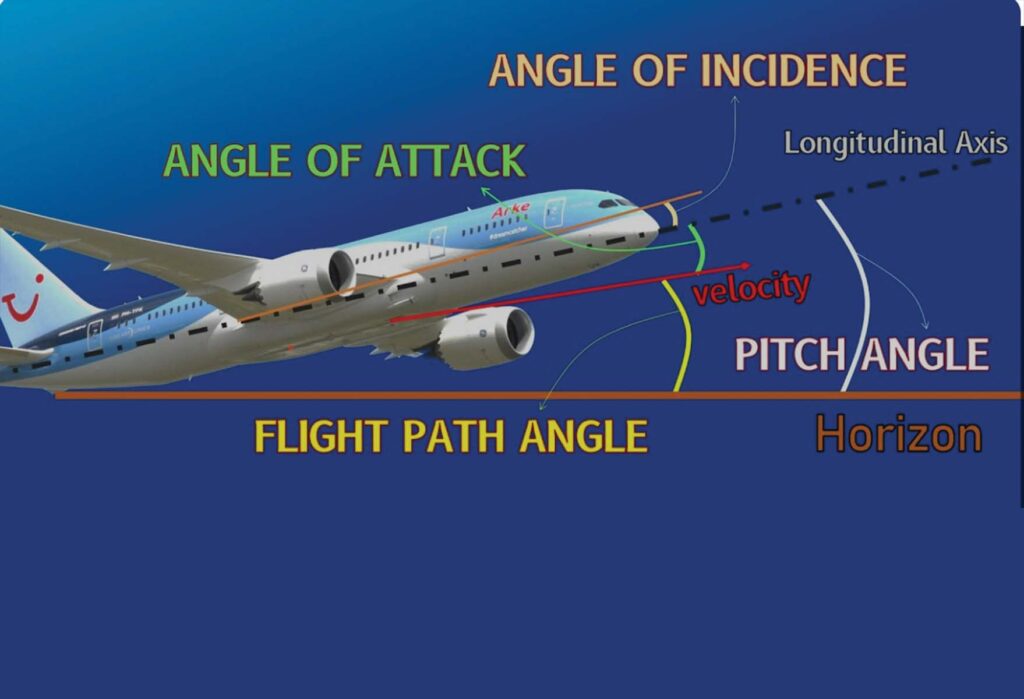
Aerofoil
Aerofoil /Airfoil refers to a cross-sectional shape having a design with a curved surface that provides the most favourable ratio between lift and drag in flight.

Terminologies
Leading Edge & Trailing edge
The part of the wing that first contacts the air – the foremost edge of an aerofoil is the leading edge.
The rear edge of an aerofoil where the airflow separated by the Leading Edge rejoins is the trailing edge
Longitudinal axis
An imaginary line through an aircraft from nose to tail, passing through its center of gravity.
Upper and Lower Surface
upper surface is also known as the suction surface, associated with high velocity and low static pressure.
Lower surface is also known as the pressure surface with higher static pressure
Angle Of Attack (AOA)
Angle between the relative wind and the chord line of the aerofoil.
Chord Line
Chord line is defined as the straight line connecting the leading and trailing edges.
Angle of Incidence
Angle between the aircraft’s longitudinal axis and the chord of the wing.
Mean Camber Line
The line that connects the leading and trailing edges and is equidistant from both the lower and upper surfaces
Pitch Angle (Attitude)
The angle between the longitudinal axis and the horizon.
Center of pressure
Center of pressure refers to the point on an aircraft’s wing where the entire lift force can be considered to act. It varies depending on factors like angle of attack, airspeed etc.
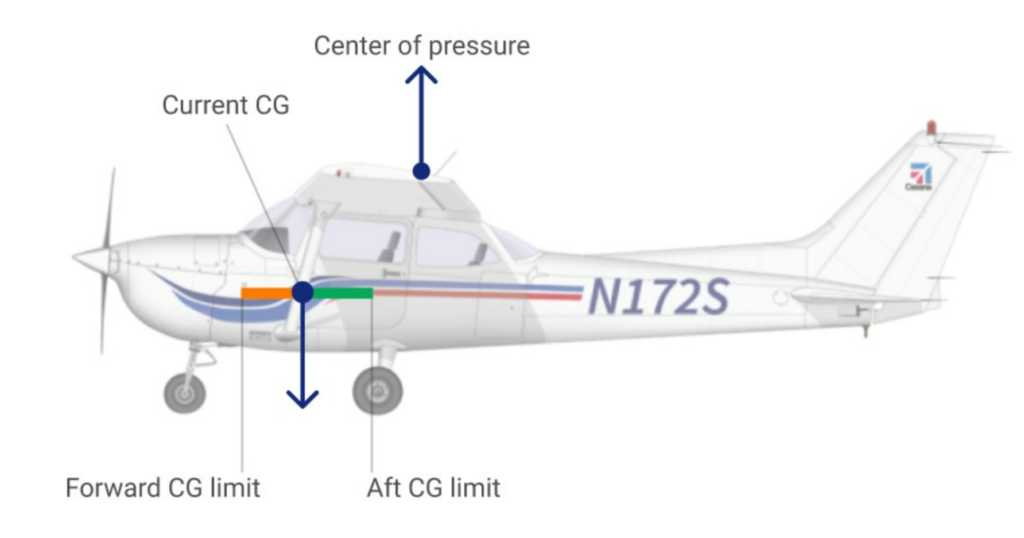
Center of gravity
Center of gravity is the theoretical point where the aircraft’s total weight can be considered to be concentrated. It is essential for determining the aircraft’s balance and stability.
NOTE
For stable flight, the Center of Gravity (CG) must be located forward of the Center of Pressure (CP). This configuration ensures that the aircraft naturally tends to return to its original position after being disturbed, promoting stability in pitch.
Aspect ratio


Aspect ratio
In aeronautics, the aspect ratio of a wing is the ratio of its span to its mean chord. It is equal to the square of the wingspan divided by the wing area. Thus, a long, narrow wing has a high aspect ratio, whereas a short, wide wing has a low aspect ratio.

High aspect ratio wings:
- Efficient lift generation due to longer spans, reducing induced drag.
- Less maneuverable at lower speeds, providing smoother flight.
- Examples: Commercial airliners, sailplanes, gliders.
Low aspect ratio wings:
- Less efficient lift generation, possibly higher induced drag.
- Better maneuverability and agility for dynamic flight.
- Examples: Fighter jets, aerobatic aircraft.

